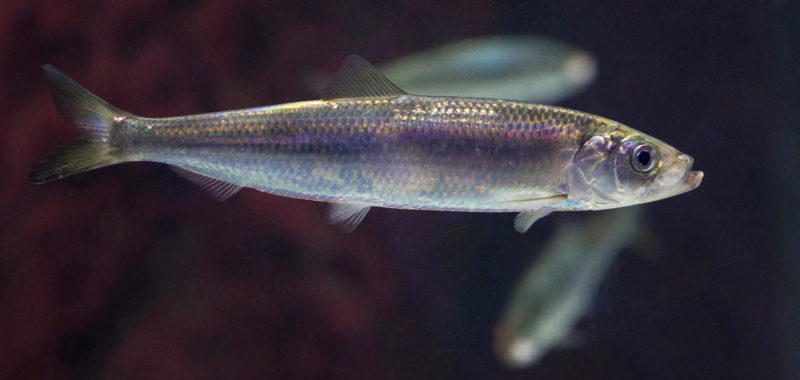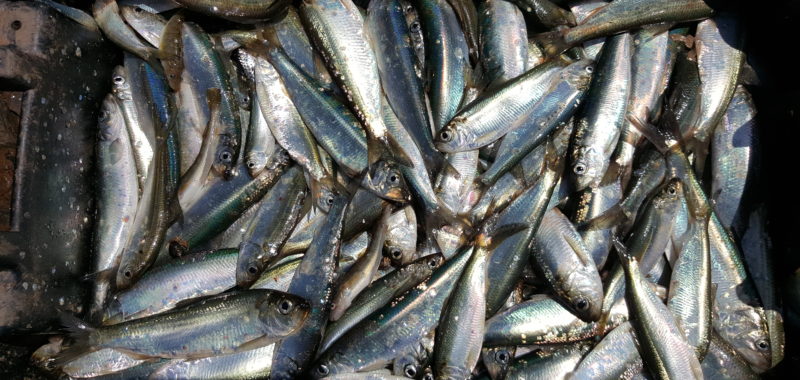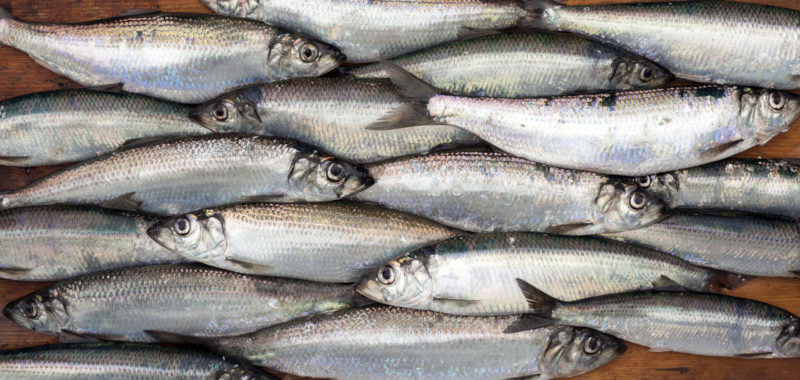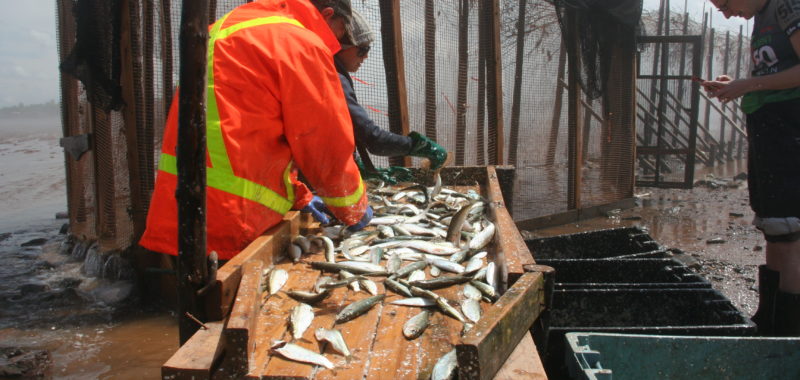Priority Species: Atlantic Herring
Scientific name: Clupea harengus
DFO Stock Status: Cautious Zone (3/4 Stocks); Critical Zone (1/4 stocks)
COSEWIC Status: No COSEWIC assessment
Dive deeper into stock-specific status details.
Atlantic herring are an indicator species3, which makes their declining population levels a serious concern. Fisheries continue to target spawning populations, harvesting herring roe for export. The commercial fishery has a quota that continues to be higher than the science advice. There is a continued unregulated fishery across thousands of small boats catching herring to use for bait.
While a population recovery plan is in place, it is not having the desired outcome, despite a quota reduction in 2017 for the Southwest Nova Scotia management area. The 2018 stock assessment was released in early 2019 confirming the overall stock biomass and total allowable catch have remained stable, but at low levels from 2011-2016 with key spawning components showing decline. Continued monitoring and management measures are needed to support stock rebuilding and reduce exploitation. The following stock assessments for herring were released in 2018: 4T-4Vn in May and 4R in July.
For the 4VWX herring stock, there is a lack of science-based reference points, including estimates of fishing mortality4. No current analytical model for stock assessment exists, and there is a continued unregulated fishery for herring as bait. Herring is an important forage species and the current quota setting does not account for ecosystem needs.
Population: An ecosystem-based rebuilding plan and a restriction on the targeted fishery for herring roe are needed. SeaChoice organizations sit on the Advisory Committee for on 4VWX fishery and Bay of Fundy spawning component to advocate for better management.
SeaChoice engages on the herring management advisory committee to advocate for better management, mandatory reporting for bait fishing, discussions with the US on shared stock management, and will advocate more broadly in Canada for ecosystem-based fisheries management.
Bycatch: Improve monitoring of fisheries for small pelagics.
Habitat: N/A
Gear: Where possible, low impact gear should be used, including weirs.
Monitoring: Increased monitoring is needed to ensure all fishing-related mortality is accounted for in the recreational and bait fisheries. Monitoring needs to include data collection from the lobster fishery on bait use.
Markets: SeaChoice aims to improve our understanding of the domestic use of Atlantic herring (including volumes), and investigate the existence and nature of exports. We are also working to improve labelling requirements to ensure herring is identified throughout the supply chain for better information tracking. SeaChoice did not agree that 4VWX herring be awarded an MSC certification in 2016 due to lack of certainty in the assessments and declining trends in spawning components and submitted stakeholder comments to that end. The fishery has now self-suspended their certification, effective May 30, 2019.
Related SeaChoice MSC submissions can be found here
Making Forage Fish Count – EAC
“Sustainable” Certified Herring: A Long Swim Ahead to True Sustainability – EAC
Common/Market Name
Atlantic Herring
Distribution
Gulf of St. Lawrence, Newfoundland, Nova Scotia, Bay of Fundy
Harvest Method
Gear Types: purse seine, gillnet, weir
Management Agency
Department of Fisheries and Oceans Canada (DFO): Maritimes Region, Newfoundland and Labrador Region, Gulf Region
Market Distribution
Bait for Canadian lobster fishery. Canning operations for human consumption. Increasing export to Asian markets (roe). Volumes unknown.






